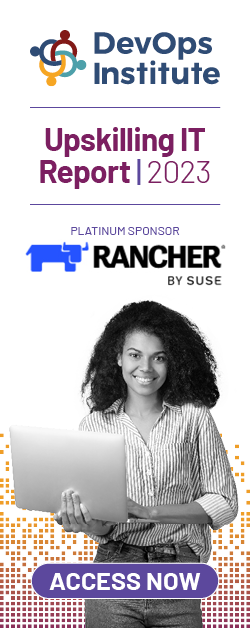
Each step of your DevOps journey requires knowledge acquisition to learn from the past and plan for the future. With a solid foundation and understanding of how the “sausage is being made,” teams can apply new or modify current practices and apply new processes, toolsets or workflows. Observability may provide the key. It is important in DevOps because it allows you to understand the internal state of a complex system and how each component can affect the other.
Before getting started with observability, there are some considerations at the organizational level, the team level and even on an individual basis. We wanted to highlight a few key tips and steps to provide clarity and understanding for an organization in the beginning stages of adopting observability tactics:
Helen Beal, Chief Ambassador at DevOps Institute, explained how to view observability.
“Think of observability as a characteristic of systems and ask teams to rate how observable their products are, then help them use AIOps to make sense of the myriad monitoring signals received and look for gaps.”
Marc Hornbeek, CEO and Principal Consultant, Engineering DevOps Consulting, discussed the importance of your source of truth.
“At the enterprise level, it is important to set up a single source of truth such as an Enterprise Data Lake or Enterprise Data Warehouse. This is needed to collect all data sources that can then be mined and analyzed with ever more sophisticated algorithms and AL/ML tools. Without this source of truth, it is not practical to support all of the many purposes and evolutions of the use of the data for observability that an enterprise needs as it matures its observability capabilities.”
Vishnu Vasudevan, head of product at Opsera, honed in on actionable intelligence.
“Observability is not just a bunch of alerts and dashboards for users to consume the data alone. To get started with observability, you need to have persona-based dashboards that help individual users gain actionable intelligence. It’s not just how many builds are happening, and you won’t necessarily care about the data that isn’t relevant to your job function.
You need to have actionable intelligence to identify the bottlenecks, and measure against the organization’s goals with respect to security, quality, and team productivity, velocity, agility, and operational performance.
If you can observe this information, it will help the business, in addition to the DevOps and engineering teams, develop a good plan and strategy for rolling out the features to end customers in the future. There are multiple observability metrics people are trying to follow, such as the key KPIs that DORA highlights. But, identifying where the bottleneck requires a different set of KPIs for a different set of personas. For example, the CISO team will have different goals, the engineering team will have a different goal, and the business will have a different goal. Observability is all about bringing everything under one roof, and exposing data for different personas collectively to help the organization to deliver much faster, safer, smarter with the baked-in security and quality.”
Mark Peters, Product Manager at BrainGu, also offered insights on how to best understand the difference between monitoring and observability before getting started.
“Monitoring is the process of using observability. When monitoring occurs, one has already decided which events and applications will be tracked. Observability creates the potential to monitor different events along the pipeline and the overall software development lifecycle. As processes get built, the potential for observability should be included across a broad spectrum. Monitoring finds specific events across the system and creates artifacts and reports that can be integrated into overall metrics.”
Supratip Banerjee, Solutions Architect, Principal Financial Group
Automate it and make it helpful. Wherever feasible, manual intervention should be avoided. Many recoveries can be automated as cloud-native enterprises get accustomed to dynamic capacity and more developed infrastructure management. When they can’t, it makes reasonable to spend money on products that provide teams in charge of uptime a helping hand.
By following these tips from industry leaders and practitioners, you will be well on your way to establishing an observability practice at your organization and taking the next step towards maturity in your DevOps Journey.
Learn more about Observability in the DevOps Institute Observability Foundation Course or by attending an upcoming Observability event


![[EP112] Why an AIOps Certification is Something You Should Think About](https://www.devopsinstitute.com/wp-content/uploads/2022/01/DOI-Human-DevOps-Digital-Podcast-Screen-600x600px-400x250.jpg)

